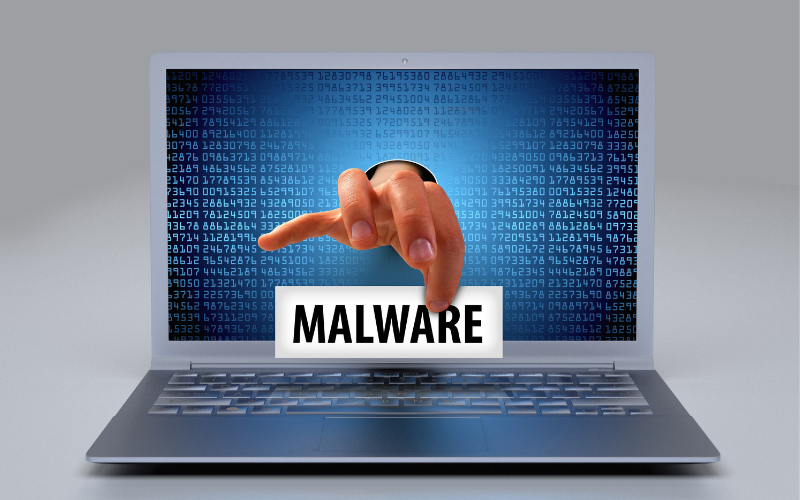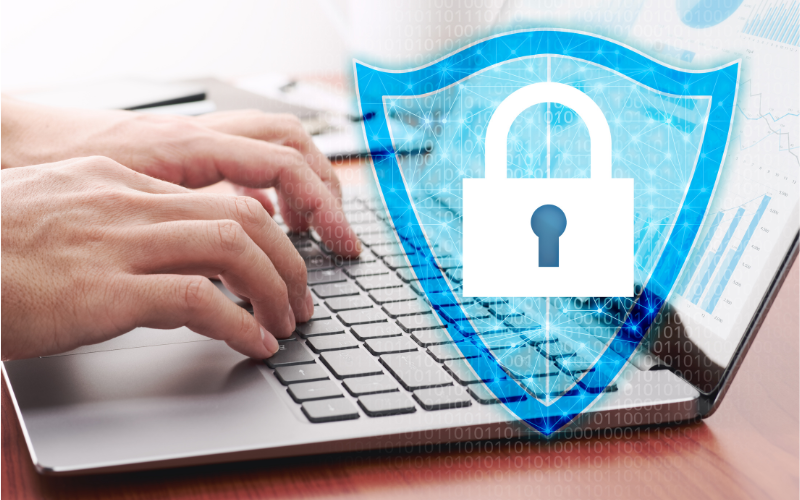Introduction
Definition Of Data Security Concern
Data security concerns refer to the worries and risks associated with protecting sensitive information from unauthorized access, modification, or destruction. These concerns arise as individuals and organizations collect, store, process, and share data in various formats. The proliferation of digital technologies has further increased these concerns as data becomes more vulnerable to cyber-attacks and other forms of malicious activities.
Importance Of Data Security Concerns
Ensuring data security is critical for any organization that collects, stores or processes sensitive information. Cybercrime has become increasingly sophisticated, and hackers are always finding new ways to breach systems and obtain valuable data. This makes it essential for businesses to have robust data security measures in place to protect their assets.
Data breaches can result in significant financial losses, loss of trust from customers and stakeholders, as well as legal consequences. In addition to the direct impact on a business’s bottom line, a breach can also damage its reputation beyond repair. Therefore, organizations must take all necessary precautions to prevent cyber-attacks by implementing effective data security strategies.
Overview Of The Article
This article aims to demystify common data security concerns by providing an overview of the topic. It covers everything from the types of cyber attacks that can occur (such as phishing scams and ransomware) to how you can safeguard your devices and networks against these threats.
In addition, the article also provides tips on best practices for securing your data, such as using unique passwords and regularly updating software. By reading this comprehensive guide, readers will gain a greater understanding of what it takes to keep their sensitive information safe in today’s constantly evolving digital landscape.
Types of Data Security Concerns
External Threats
External threats are one of the most common concerns when it comes to data security. These threats come from outside sources and can include cyber attacks, hacking attempts, phishing scams, and malware infections. The risk of external threats is constantly increasing due to the growing number of connected devices and the widespread use of cloud-based services.
Cyber Attacks

A cyber attack is an attempt to steal, damage or control digital assets such as personal information, financial data or intellectual property without authorization. These attacks can take many forms including phishing scams, malware infections, ransomware attacks and denial-of-service (DoS) attacks which can cripple websites and networks.
Malware

Malware, which is short for malicious software or code, refers to any program or file that is specifically designed to cause harm to computer systems or networks. Malware can take various forms such as viruses, worms, ransomware, spyware and trojans. It can be spread through email attachments, infected software downloads or by visiting compromised websites.
Once installed on a system, malware can carry out numerous harmful activities such as stealing sensitive data like login credentials and financial information; hijacking webcams and microphones to record users’ activities; encrypting files and demanding ransom payments; and using the infected computer to launch attacks on other systems.
Phishing

Phishing is a type of cyberattack where scammers send fraudulent emails or text messages to target individuals or organizations. Phishing aims to obtain sensitive information such as login credentials, financial data, and personal details for malicious purposes. Phishing emails usually contain links to fake websites that mimic legitimate ones, asking users to enter their login credentials or other confidential information. The consequences of falling victim to a phishing attack can be severe, leading to identity theft, fraud, financial loss, and reputational damage.
Internal Threats
Internal threats refer to the risk of data breaches caused by employees, contractors, or other individuals who have access to sensitive information within an organization. Internal threats can be caused intentionally or unintentionally and can lead to severe consequences such as loss of customer trust, damage to reputation, and financial losses.
Employee Error
Employee errors include anything from accidentally sending sensitive information to the wrong recipient, misplacing or losing devices containing confidential information, or falling prey to phishing scams. While these errors may seem innocent enough, they can have serious consequences for a company’s reputation and financial stability.
Insider Threats
Insider threats may come from employees, contractors, or anyone with authorized access to an organization’s systems and data. Insider threats can be malicious, such as theft of sensitive information or sabotage of critical infrastructure. However, they can also be non-malicious, such as unintentional data leakage or unintentional exposure of sensitive information.
Organizations need to proactively address insider threats by implementing security measures that limit the risk of unauthorized access or activity on their networks. Some of these measures include developing and enforcing security policies that outline the acceptable use of systems and data; restricting access to sensitive information only to those who require it for their job functions; monitoring network activity for suspicious behaviour; and providing ongoing training to employees about cybersecurity best practices.
Human Error
The human error takes many forms, such as emailing sensitive information to the wrong person, leaving a laptop or mobile phone unattended in a public place, or falling for phishing scams. These mistakes are often unintentional and can happen to anyone, regardless of their level of technical expertise.
Physical Threats
Physical threats are a significant data security concern that many individuals overlook. While most people put their faith in digital security measures, it’s important to remember that physical breaches can be just as damaging. For example, an intruder who gains access to your office or server room could steal hard drives or other sensitive equipment containing valuable data. Additionally, natural disasters like fires or floods could damage physical servers and storage devices beyond repair, compromising critical information.
Natural Disasters
Floods, hurricanes, and earthquakes can damage infrastructure and cause power outages that lead to loss of data or even complete system failure. Companies must take precautions to ensure the safety of their data during such events. This may involve backup generators, redundant systems, and off-site cloud storage.
Sabotage
Sabotage refers to the intentional destruction or disruption of data, systems, or infrastructure by an insider or outsider. It could be an act of revenge by a disgruntled employee, a hacker trying to gain unauthorized access to sensitive information, or even a competitor trying to gain an unfair advantage.
Consequences of Data Security Breaches
Data security breaches can have severe consequences for businesses of all sizes. Once confidential information is exposed, it can lead to a range of problems such as identity theft, financial loss, and reputational damage.
Financial Losses
Financial losses can come in different forms, such as a loss in revenue or income, legal and regulatory fines, and reputational damage. An organization that experiences a data breach is likely to face significant costs associated with investigating the incident, notifying affected individuals, offering credit monitoring services, and implementing security measures to prevent future incidents.
Reputational Damage
A data breach can destroy customer trust and cause long-term harm to a company’s reputation. In today’s digital age, where sensitive information is stored online and cyber attacks are becoming increasingly common, it’s more important than ever for businesses to take proactive steps to protect their customers’ data.
Legal Consequences
Companies that fail to comply with data protection regulations and suffer a cybersecurity breach may face fines, lawsuits, and reputational damage. Additionally, regulatory authorities may conduct investigations that can lead to sanctions or even criminal charges.
One of the most significant legal consequences of poor data security practices is violating the General Data Protection Regulation (GDPR). Under GDPR, companies must obtain explicit consent from individuals before collecting and processing their personal data. Failure to comply with GDPR can result in fines of up to 20 million euros or 4% of the company’s global annual revenue for the previous financial year.
In addition to GDPR violations, companies may face class-action lawsuits from consumers affected by data breaches. These lawsuits seek compensation for damages such as identity theft, loss of privacy, and financial loss due to fraudulent activity.
Loss of Trust
When trust is lost due to a breach, customers may feel violated and their confidence in an organization’s ability to protect their data may be shaken. This may lead to negative publicity and ultimately result in lost sales.
Moreover, loss of trust can also affect employees who may feel insecure about the safety of their own personal information that they have shared with the company. It can lead to an increase in anxiety levels among them as they are unsure if their employers will ensure the safety of their personal information.
Best Practices for Data Security

Network Security
Network security is an essential aspect of data security, which focuses on protecting the IT infrastructure that allows communication and sharing of information between different devices. A network consists of various components such as routers, switches, firewalls, and servers that need to be protected against unauthorized access. Network security involves implementing several measures such as firewalls, intrusion detection and prevention systems, virtual private networks (VPNs), and encryption algorithms.
A firewall acts as a barrier between internal systems that store sensitive data and external networks such as the Internet. It monitors incoming traffic to detect any suspicious activity or threats and blocks them from entering the network. Intrusion detection and prevention systems monitor network activities to identify potential attacks or malicious behavior in real-time. VPNs provide secure communication channels over public networks by encrypting data transmitted between devices.
Encryption
Encryption involves converting plaintext into ciphertext using a mathematical algorithm, making it unreadable and unusable without the right decryption key. This technique helps ensure that even if a cybercriminal gains access to encrypted data, they cannot make sense of it without the encryption key.
Encryption is particularly useful when transmitting sensitive information over insecure networks like the internet. It adds an extra layer of protection against interception by hackers or other malicious actors who may seek to steal or manipulate the data in transit. Even if intercepted, encrypted data remains unintelligible to anyone who doesn’t have the encryption key.
Access Control
Access control refers to the measures put in place to regulate and manage access to sensitive information, systems, or resources by authorized personnel only.
The process of implementing access control involves identifying who needs access to specific resources and determining the appropriate level of authorization for each user. This can be done through various methods such as passwords, biometric authentication, smart cards, or role-based access control. By restricting unauthorized users from accessing sensitive information or systems, organizations can reduce the risk of data breaches and cyber attacks.
Employee Training
Employee training should cover various topics such as password management, email safety, and device security protocols. Training sessions should be interactive, covering both theoretical knowledge and practical applications in real-life scenarios. An effective training program should emphasize employee responsibility in safeguarding company assets from cyber threats by embracing a cybersecurity culture across all departments. Investing in employee training is an investment in your business’s future success. A well-trained workforce contributes significantly to your organization’s overall security posture while also reducing the risk of costly data breaches or other cyber incidents.
Regular Backups
By ensuring that all critical data is regularly backed up, businesses can minimize the risk of losing crucial information in the event of a cyber attack or other unforeseen circumstance. Regular backups should be scheduled at intervals that make sense for the business, whether that’s daily, weekly, or monthly.
In addition to scheduling regular backups, it’s important to ensure that those backups are stored securely. This means keeping them offsite and away from potential threats such as fire or theft. Many businesses use cloud storage services to store their backup data as they offer high levels of security and accessibility from anywhere in the world.
Responding to a Data Security Breach
Steps To Take Immediately After A Breach
Once a breach is detected, it’s important to take immediate action. Isolate the affected systems or devices to contain the damage and prevent further spread of the breach. This can be done by disconnecting affected devices from networks or disabling access to certain accounts.
Assess the extent of the breach and determine what types of data have been compromised. This will help you determine which authorities need to be notified as well as which customers or stakeholders may have been impacted.
Implement measures for prevention in order to avoid future breaches from occurring. This could include updating security software and protocols, training employees on proper cybersecurity practices, and conducting regular audits of system vulnerabilities.
How To Communicate With Affected Parties?
Be transparent and honest about what occurred. You should explain the situation clearly and provide as much detail as possible without compromising sensitive information.
Be timely in your communication. The longer you wait to notify affected parties, the more damage can occur both for them and for your organization’s reputation. Consider setting up a plan ahead of time so that you are prepared in case of an incident, including who will handle communication with different groups and what information needs to be shared at each stage.
Preparing For Future Breaches
Implement strong security measures such as firewalls, encryption software, and multi-factor authentication. Have a comprehensive incident response plan in place. This plan should detail the steps that need to be taken in the event of a breach, including who needs to be notified and what actions should be taken to mitigate the damage. Regularly testing and updating this plan can help ensure that everyone involved knows their roles and responsibilities.
FAQs
What Are The Consequences Of A Data Breach?
The consequences of a data breach can be severe and far-reaching for both individuals and businesses. One of the most immediate impacts is financial loss, as organizations may face hefty fines or legal fees associated with the breach. Additionally, companies may lose customers’ trust and suffer reputational damage, leading to decreased sales and revenue.
In addition to financial consequences, data breaches can also result in identity theft and fraud. Cybercriminals may use stolen personal information such as social security numbers or credit card details to commit fraud or make unauthorized purchases on behalf of victims. This can lead to long-term financial harm for individuals and potentially affect their credit scores.
Furthermore, data breaches can also have broader societal implications if sensitive information is exposed. For example, medical records containing confidential patient information could be leaked in a healthcare-related breach – this not only puts patients at risk but can hinder medical research efforts if people become hesitant about sharing their personal health data in future.
How Can Businesses Protect Against Data Breaches?
It’s important to implement strong passwords and two-factor authentication protocols for all employees who have access to the company’s systems. This will help prevent unauthorized access in case an employee’s login credentials are compromised.
Regularly update software and hardware with the latest security patches and updates. This includes firewalls, antivirus software, and operating systems. Additionally, companies should conduct regular vulnerability assessments and penetration testing to identify potential weaknesses in their systems before they can be exploited by hackers.
Businesses should have a comprehensive incident response plan in place that outlines how they will respond in the event of a data breach or cyber attack. This includes identifying key personnel who will be responsible for responding to incidents, as well as establishing communication protocols with customers, partners, and other stakeholders so everyone knows what steps are being taken to address the situation.
What Is The Role Of Employees In Data Security?
The role of employees in data security involves following best practices for password management, avoiding suspicious emails or links, reporting any security incidents or breaches immediately, and staying up-to-date with the latest security policies and procedures. Employees must also be aware of their access privileges and should only have access to data that is necessary for their job duties.
What Are The Challenges Of Global Data Security?
With more businesses operating on a global scale, there is an increased risk of cyber-attacks and data breaches. The main challenge lies in creating uniform policies and procedures to ensure the safety and security of data across all regions.
Another significant challenge is the lack of awareness among employees about data security measures. Employees often unintentionally put company data at risk by sharing sensitive information with unauthorized parties or using weak passwords for their accounts. This highlights the importance of conducting regular training sessions to educate employees on best practices for maintaining data security.
Differences in legal regulations across different countries can create ambiguities when it comes to the cross-border transfer of data. Companies need to comply with various laws and regulations, which can sometimes be contradictory, adding another layer of complexity to global data security challenges.
Conclusion
Data security is a critical aspect of any organization or individual that handles sensitive information. It involves the protection of digital data from unauthorized access, use, disclosure, modification or destruction. With the increasing amount of data being generated each day and the growing number of cyber threats, it is essential to implement adequate security measures to safeguard your data.
